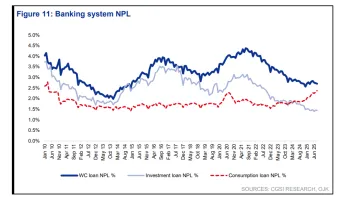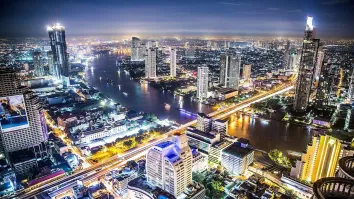
Local bond market’s problems heighten Chinese banks' credit risks
The bond market’s repayment woes may force banks to make concessions for the sake of financial stability.
Chinese banks face an ongoing and amplified Catch-22 in the aftermath of the pandemic. Whilst asset quality remains under control, the financial sector’s bond market is facing considerable pressure whilst credit risk polarization is likely, reports Natixis Asia Research.
Overall asset quality of banks in China remains under control, the report said. Thanks to the quick economic rebound, the decline in banks’ profitability is relatively mild in China compared to global peers. The net income growth of Chinese banks decelerated from 6.9% in 2019 to 0.7% in 2020, but still outpaced the 44% contraction recorded from the rest of the world.
Chinese banks’ stressed loan ratio also fell from 4.8% in 2019 to 4.2% in March 2021, in part thanks to faster loan growth and a rather aggressive write-off policy; banks have written off 0.7% of total loans in 2020, which is higher than the 0.45% for global peers.
But the stressed loan ratio may not provide a full picture of Chinese banks’ credit risk. A more timely measure of asset quality is the bond market, which shows that bond issuers have delayed more repayments and that there is now a polarization of credit risks amongst different types of ownership, sectors and provinces, notes Natixis’ chief economist for Asia Pacific Alicia Garcia Herrero.
Credit polarization is expected to come not only amongst and within state-owned enterprises (SOEs) and private firms (POEs), but also across sectors and provinces--this means that banks and bond issuers doing best will become better, whilst those faring badly will become even worse.
Banks may also eventually find themselves having to make concessions given this ballooning bond problem. The shadow cast by the drama surrounding Huarong Asset Management Company, in particular, may push China’s regulators to force banks to make concessions for the sake of financial stability.
New regulations aimed at containing financial risk have also increased repayment pressure for POEs. In particular real estate developers, which are largely privately owned, are at the eye of the storm forming 31% of onshore bonds with repayment pressure so far in 2021.
Still, the pressure is concentrated in a few provinces, such as Hainan, Liaoning, Hubei and Tianjin. In the same vein, local governments with less fiscal space may face higher difficulties in supporting the firms in their own provinces, Herrero notes.
Overall, local banks are expected to continue their rapid loan write-off and asset securitization. This means that heightened credit risk in the aftermath of the pandemic will, at least, be shared by the rest of the economy.



















 Advertise
Advertise






